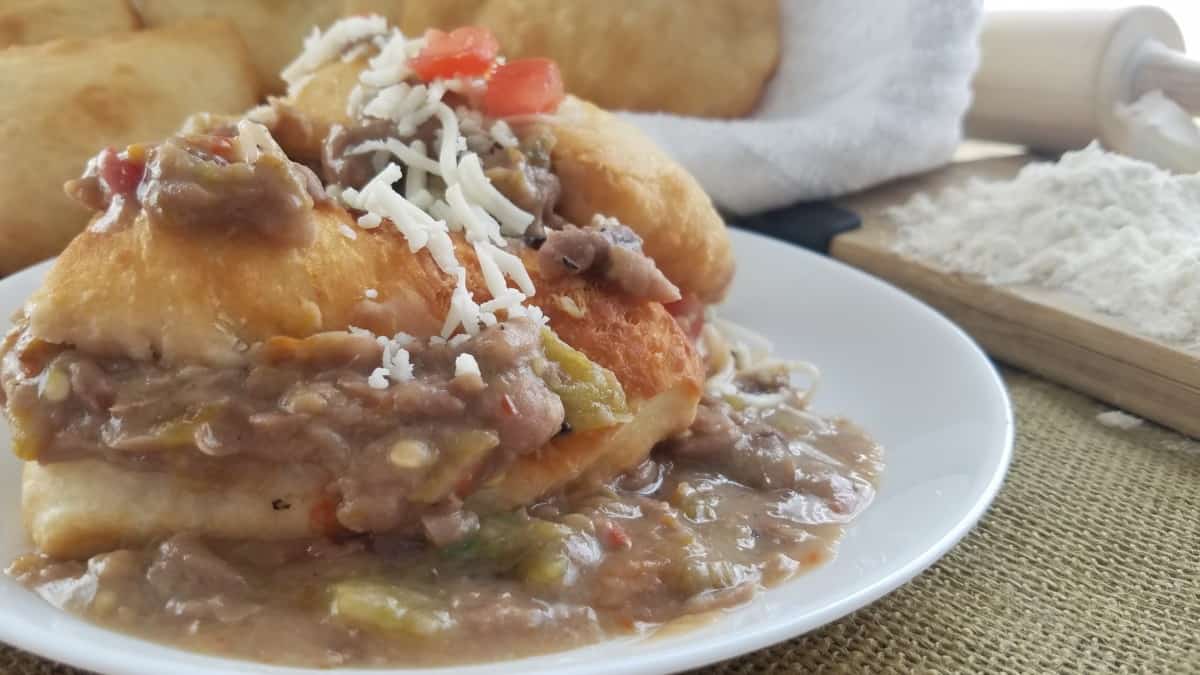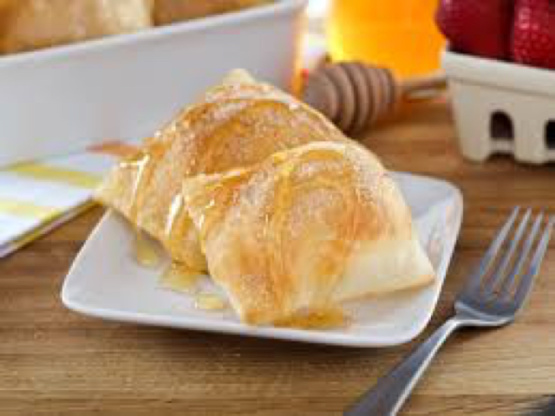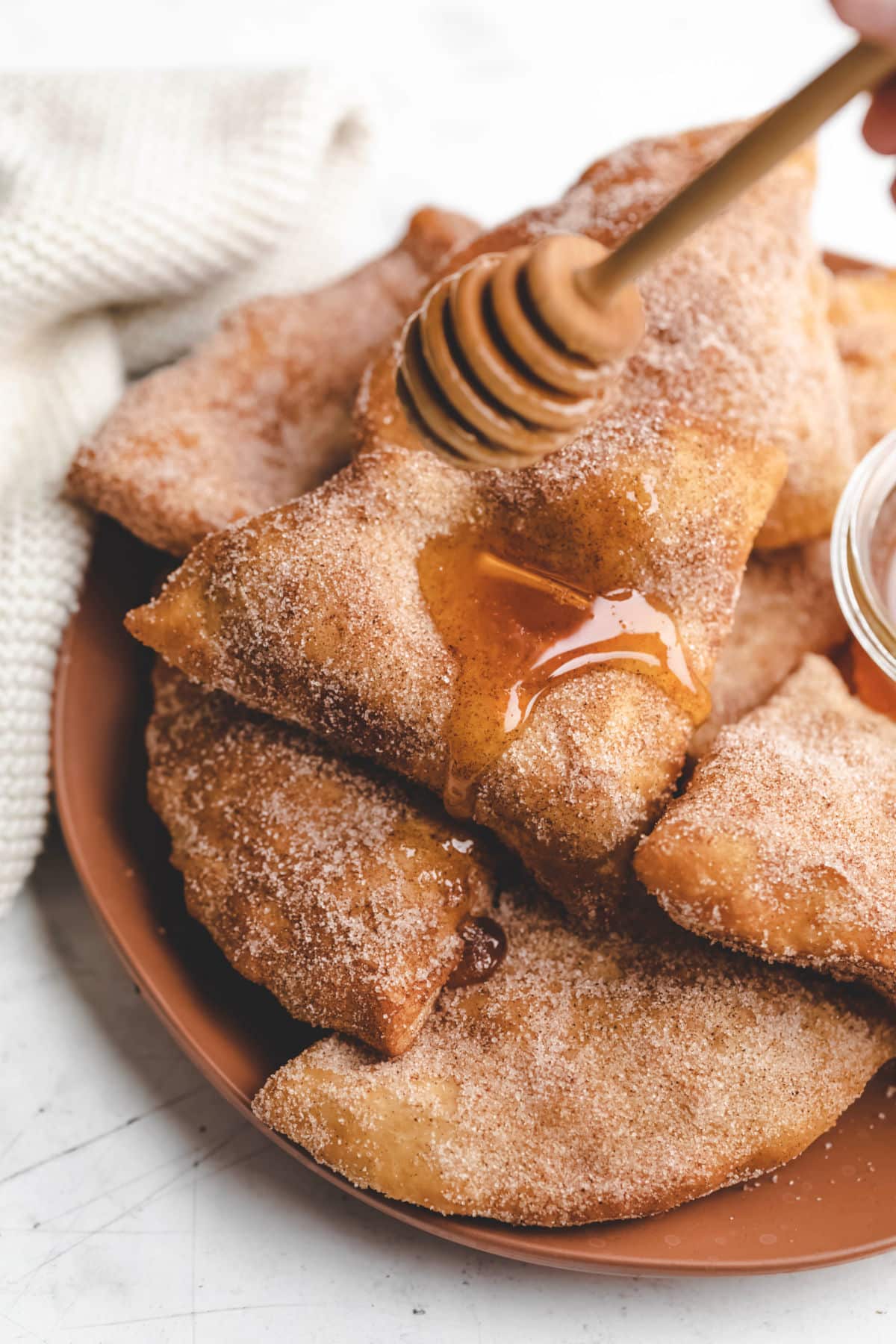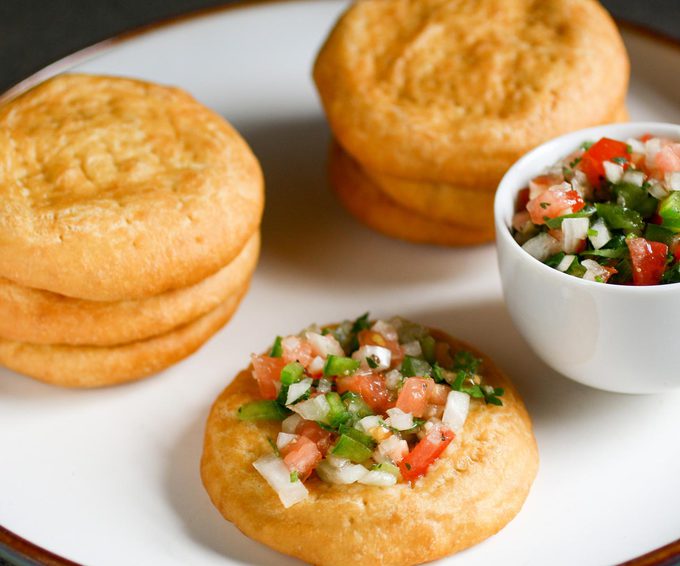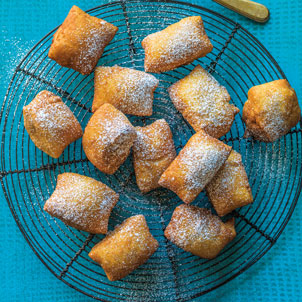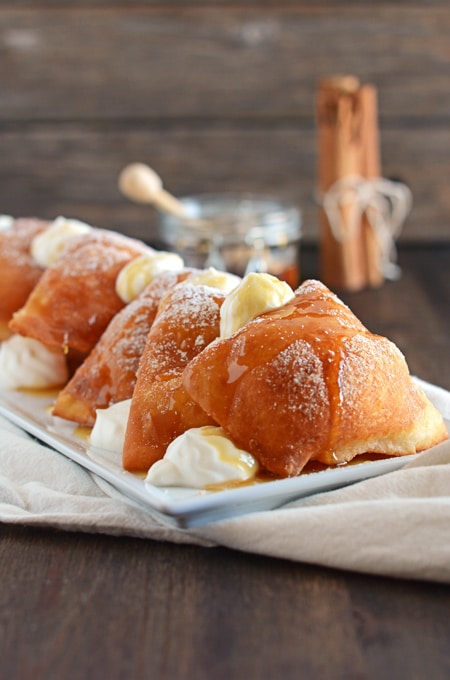Sopaipilla
sopapilla
A sopaipilla, sopapilla, sopaipa, or cachanga is a kind of fried pastry and a type of quick bread served in several regions with Spanish heritage in the Americas.[note 1] The word sopaipilla is the diminutive of sopaipa, a word that entered Spanish from the Mozarabic language of Al-Andalus. The original Mozarabic word Xopaipa was used to mean bread soaked in oil. The word is derived in turn from the Germanic word suppa, which meant bread soaked in liquid. A sopaipilla is traditionally made from leavened wheat dough to which some shortening such as butter is added. After being allowed to rise, the dough is rolled into a sheet that is then cut into circular, square or triangular shapes, 8–10 cm in size for the longest dimension (if intended for a dessert) or 15–20 cm (if intended to be stuffed for a main course). These pieces are then deep-fried in oil, sometimes after being allowed to rise further before frying: the frying causes them to puff up, ideally forming a hollow pocket in the center. Fried cakes have been made by humans since the development of the earliest pottery vessels that could hold oil or fat, around 5000 to 3000 BCE.[citation needed] In ancient times, frying cakes was a primitive substitute for baking, requiring only fire and a simple vessel. Every culture has developed some form of the dish. Sopaipilla is a version found in Latin American cuisine, Tex-Mex cuisine and the cuisine of the Southwestern United States.
Source: Wikipedia
Recipes

Sopaipillas - Traditional Latin American Recipe | 196 flavors

Green Chile Beef Stuffed Sopaipillas – www.newmexicanconnection.com

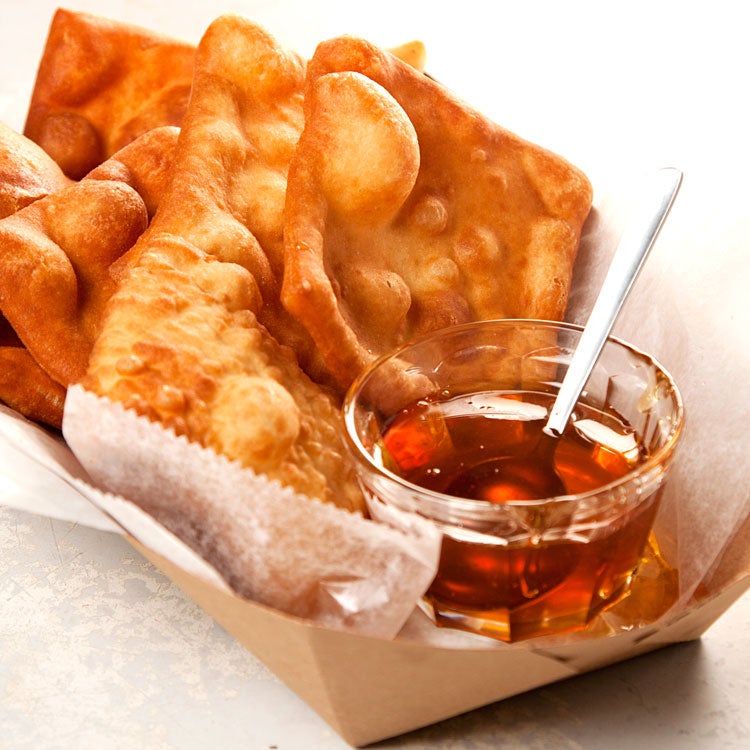
:max_bytes(150000):strip_icc()/AR-23047-real-sopapillas-DDMFS-2x1-b851e6efa4144a578260839dc9ff68f8.jpg)
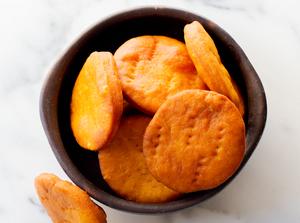
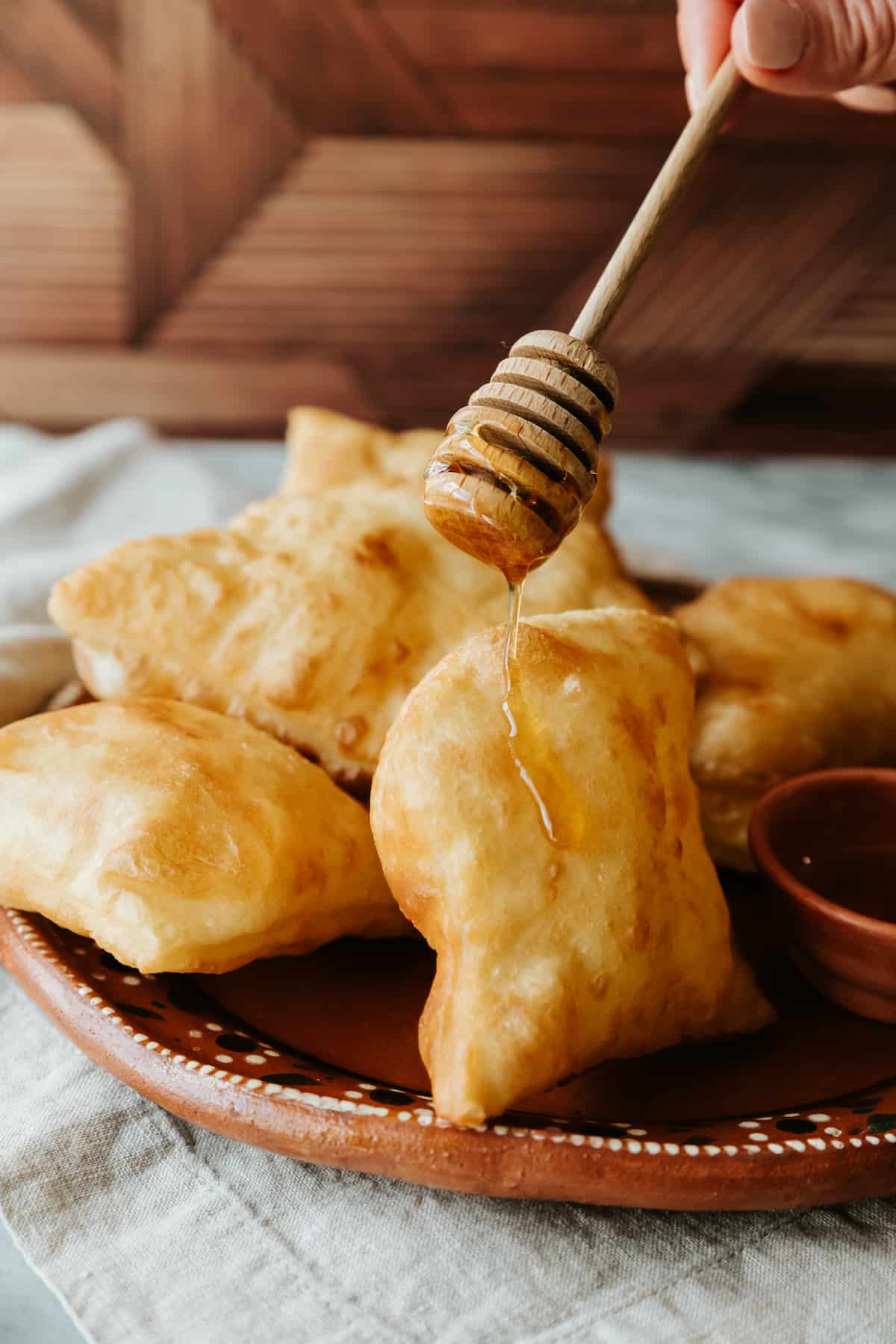

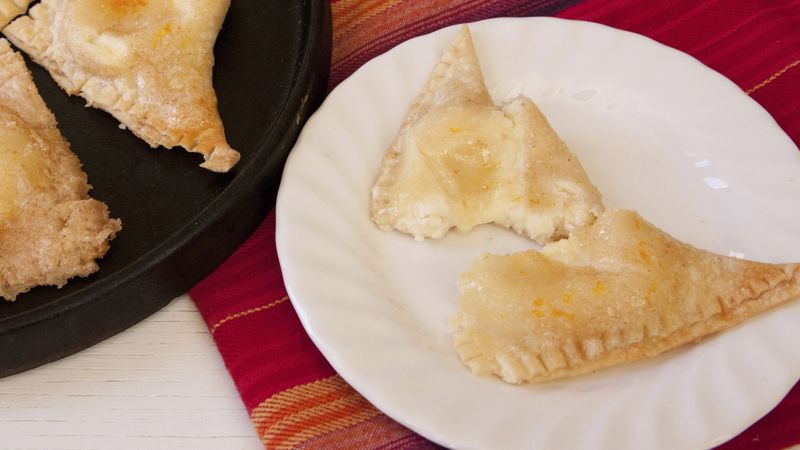
:max_bytes(150000):strip_icc()/p_34114-d563d8a437c440d1a3c52b0dce0d2470.jpg)
